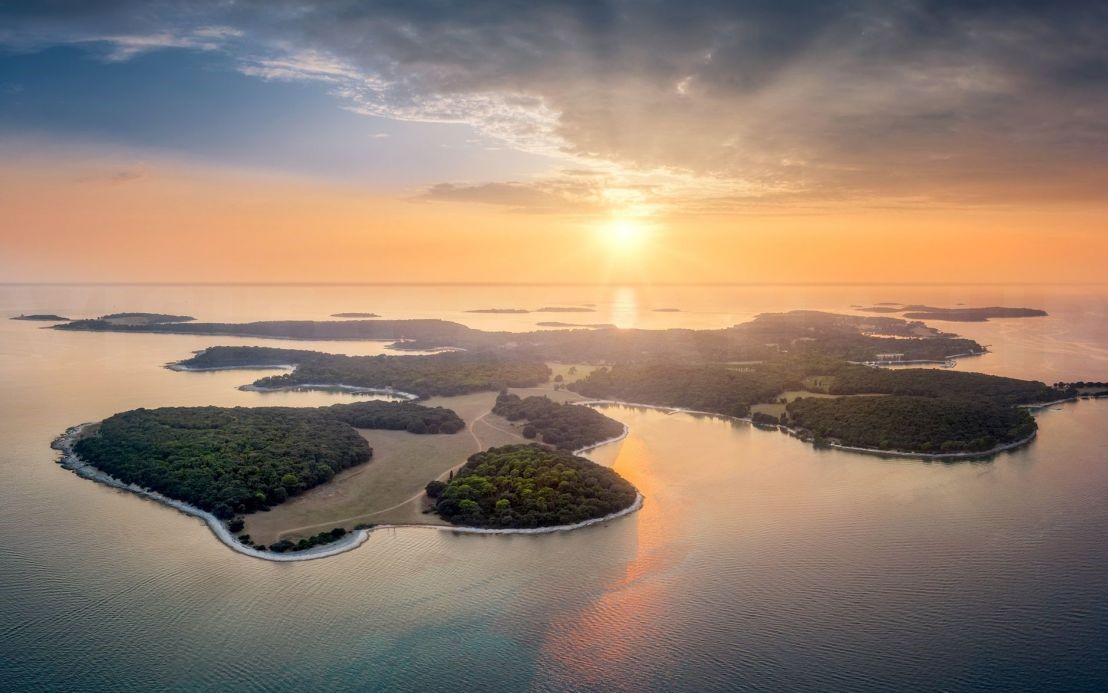04 Apr The best Croatian national parks to visit on your sailing summer vacation
Croatian coast offers so much more than a blue sea and beautiful small towns and islands. Between the famous Dubrovnik town in the south and heart-shaped Istria to the north, there are myriad of remarkable places to visit for your sailing holiday in Croatia. Discovering thousands of Croatian islands with your group on the boat is probably the most unique and authentic way of exploring this hidden European gem. Blessed with a diverse landscape, mild Mediterranean climate, sun-soaked infinite coastline, crystalline Adriatic sea, historic, stone-walled towns and dream-like beaches and amazing natural parks, Croatia is the perfect place for a 7 day sailing adventure. Fortunately for you, four out of Croatia’s eight national parks can be visited from a comfort of a private sailing boat. Here are 4 most impressive Croatian national parks and 2 parks of nature you simply can’t miss out during your Adriatic summer holiday.
National park Brijuni
Brijuni National Park is a large group of islands located on the western coast of Istria. The Brijuni archipelago consists of 14 islands and islets situated on the surface of 744 hectares. The Adriatic marine ecosystem is nearly completely represented within the sea and on the beautiful, rocky shores of Brijuni. Veliki Brijun and Mali Brijun are the largest islands of the archipelago decorated with amazing landscape parks, meadows, pastures, Istrian vegetation, and architectural heritage. Brijuni was the official residence of the former Yugoslavian president Josip Broz Tito for three decades and thanks to him, the natural beauty of the Brijuni Islands has been preserved. In addition to being one of the most beautiful national parks in Croatia.
What to visit:
A beautiful safari park
Many indigenous Istrian and exotic Asian, African and South America animals freely run throughout Veliki Brijun’s gorgeous safari park. Take a walk or a ride with zebras, llamas, ostriches, peacocks, sacred cows and even see an Indian elephant.
Tito’s parrot – Koki the legend
Adorable Koki is a rare example of yellow-crested cockatoos, which Tito gave as a birthday gift to his granddaughter Saša. He is 60 years old and lives at Veliki Brijun. Koki still speaks, shakes hands and animates visitors as a true host!
Dinosaur footprints
More than 200 dinosaur footprints have been discovered on Brijuni. Footprints are located at the islands of Veliki Brijun, Vanga, Galija and Vrsar. Visitors can take a look at the footprints at Veliki Brijun, on Cape Ploče and on Cape Vrban
The old olive tree
One of the oldest olive trees in the Mediterranean is located on the island of Veliki Brijun. This famous olive tree is more than 1600 years old and its olives are still used for olive oil production.
National park Krka
Krka National Park lies about 10km inland from Sibenik in this part of Dalmatia. Named after the Krka River, the Park covers an area of just over 142 square km and includes two-thirds of the river itself. The top attraction of the Park is its magnificent waterfalls, including the famous Skradinski Buk falls which are one of Croatia’s most famous sights. Other highlights include the small island of Visovac and Roski Slap waterfall.
The Skradinski Buk waterfalls are a collection of 17 waterfalls that range in height by over 45 metres. It used to be possible to swim by these waterfalls – a truly wonderful experience – but since 2021 this has been forbidden in order to preserve the waters of the park.
The island of Visovac in the Krka river was settled by Franciscan monks in 1445, who originally built a monastery in that year (later demolished, then rebuilt in the 18th century) and a church in 1576. The monastery contains a number of well-preserved artefacts and a library.
Roski Slap is another famous sight within Krka National Park. A series of 12 waterfalls in a space of 450 metres, the largest is just over 22 metres in height and 60 metres in width.
National park Kornati
Kornati National Park is called a “nautical paradise” thanks to its incomparable and unique beauty. Nacionalni park Kornati is an archipelago of 89 gorgeous islands, islets, and reefs in the northern part of Dalmatia, near Dugi Otok, Pašman, Murter, Zadar, and Šibenik. Like Brijuni National Park, Kornati National Park is comprised of both land and sea.
The park has a true summer “olive climate”, warm with hot and dry summers, and some rain in the autumn. Fields, paths, and charming stone walls make Kornati National Park a popular destination for tourists and locals alike. There are no residents on the Kornati islands, making it a wild destination for exploring.
National park Mljet
Mljet National Park is a large area that borders two saltwater lakes – Veliko and Malo Jezero (Large and Small Lake). The Lakes stretch for about 4 kilometers. Right in the middle of the Large Lake, there is a small island/islet Melita (Sveta Marija) with a large building of the former Benedictine monastery, erected there in the 12th century. The monastery’s building is now a café/restaurant. The small island is connected by boats that sail there from both sides of the Lake. A similar landscape with lakes and small islet you can also visit is Plitvice Lakes national park which is situated in the northern part of Croatia
Park of nature Telašćica
Nature Park Telašćica is located in the southeastern part of the island Dugi otok and with the surrounding waters as well as 13 islands, islets and rocks it makes a miraculous harmony of nature on 70,5 km². The Mediterranean vegetation is represented in the park with more than 400 plant species as well as numerous rare and endemic plants that have been recorded. The underwater world is home to about 250 plants and 300 animal organisms, including the now depleted red coral and the carnivorous sponge. The park is a haven for the 14 island donkeys, which roam freely in the bay Mir.
The park is characterized by three phenomena:
- The Telašćica bay is one of the safest, the most beautiful and largest natural ports in the Adriatic. There are 6 islets and cliffs inside the bay, and 25 small coves on the 69 km indented coastline. It is an attractive anchorage for many boaters.
- The cliffs of the island Dugi otok or locally called “Stene” rising up to 200 m over the sea, and vertically falling down 90 m into the sea. Great number of bird species nest here, as well as Peregrine Falcon and Eleanor’s Falcon.
- Salt Lake “Mir” with fine curative gray silt is the residence of the endemic specie of eel called “Kajman”.
The Park offers organized tours in nature, cruising, water sports, diving, fishing, cycling, photo safari and traditional sea specialities in several catering establishments in the area of the park.
Park of nature Lastovo
The island of Lastovo and its Archipelago became the Croatian Nature park “Lastovsko Otocje” in September 2006, when the Croatian government passed the Act on Designating the Lastovo Archipelago Nature Park. The Lastovo Archipelago is the eleventh nature park in Croatia. It covers an area of almost 200 km2 of which the mainland area accounts for 53 km2 and the marine area for 143 km2. The Nature Park contains all 44 islands, small islands, cliffs and reefs belonging to the Lastovo municipality, with the biggest being Lastovo and Sušac.
Lastovo Island and its archipelago are in need to be preserved because of it’s ecological, educational and cultural values. The Lastovo Archipelago consists of 44 islands and islets and it is the furthermost group of islands from the Croatian Mainland. Together with the sea, it covers the area of 195 square kilometres. The Lastovo Nature Park will also include Island Sušac with it’s surrounding sea-area of 500 m2 radius. Once established, the area of Lastovo Nature Park will be legally protected from any kind of exploitation.









No Comments